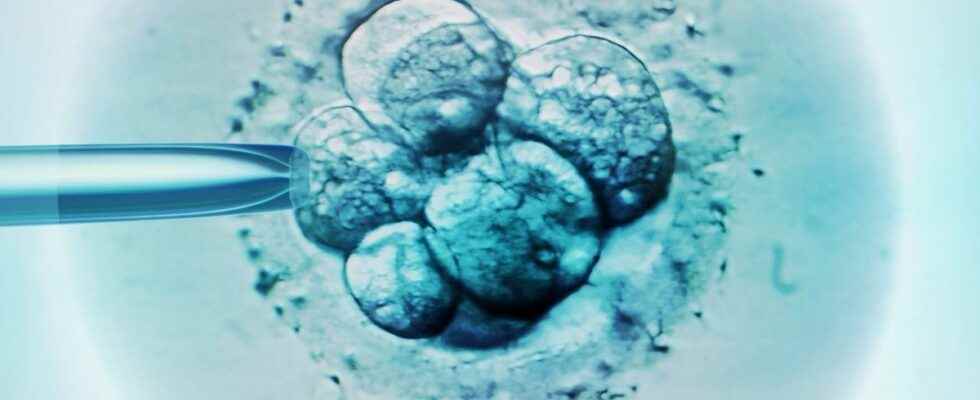Published on
Updated
Reading 2 mins.
in collaboration with
Dr Gérald Kierzek (Medical Director of Doctissimo)
Medical validation:
September 08, 2022
These embryos were obtained without sperm or eggs, but only from mouse stem cells grown in the laboratory.
It is a world first. The very first “synthetic” embryos – grown in artificial wombs – have just been created by a team of researchers from the Weizmann Institute of Science in Rehovot, Israel. Details of this exploit were published in the journal Cell.
Mouse stem cells were used
To achieve this feat, the researchers started from mouse cells which they retransformed into stem cells, that is to say into “mother” cells, from which all the other blood cells (red blood cells, white blood cells and platelets) develop.
These stem cells were separated into three groups: two pretreated for 48 hours and a “normal” group.
“We gave these two groups of cells a transient boost to give rise to extraembryonic tissues that support the developing embryo.“, explains one of the authors.
Then, the cells were placed in rotating beakers with a nutrient solution to allow them to multiply. These continuously moving devices simulated the natural supply of nutrients, while oxygen exchange and atmospheric pressure were controlled.
Within these artificial wombs, the vast majority of these cells failed to develop. Only 0.5% of them assembled into small elongated spheres…95% resembling real embryos.
Follow your pregnancy week by week
The embryos developed correctly until the 8th day
If these “viable” embryos developed correctly until the eighth day (the organs were already perfectly formed: active heart, emerging blood circulation, brain, neural tube, intestinal tract), termination of pregnancy was confirmed shortly after . Either in the middle of the mouse’s gestation, which is equivalent to 20 days.
This stop could be linked to the intrinsic structure of the embryo: it would not entirely reproduce the cellular architecture of the so-called “natural” embryo.
This method nevertheless remains very valuable for science because it could limit the use of natural embryos, derived from animals, in laboratories.
Synthetic embryo models could also be useful in the field of organ transplantation: they represent a significant source of cells, tissues and organs.
